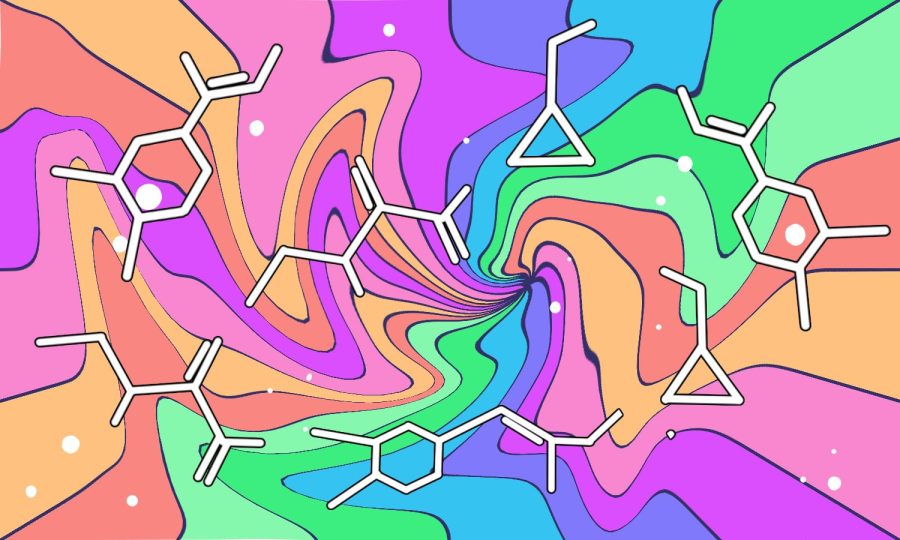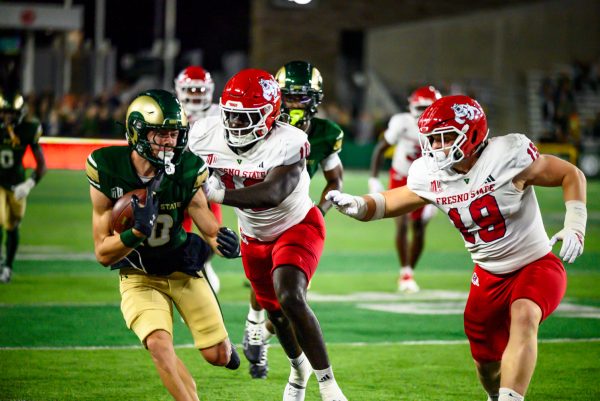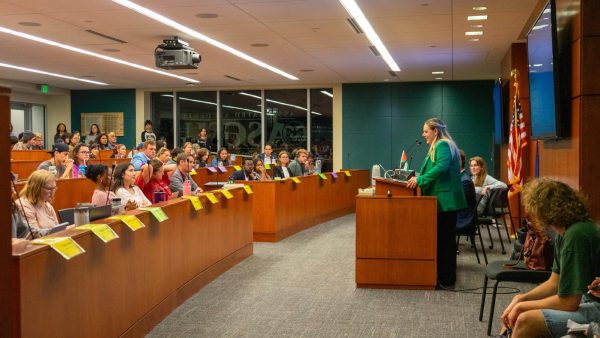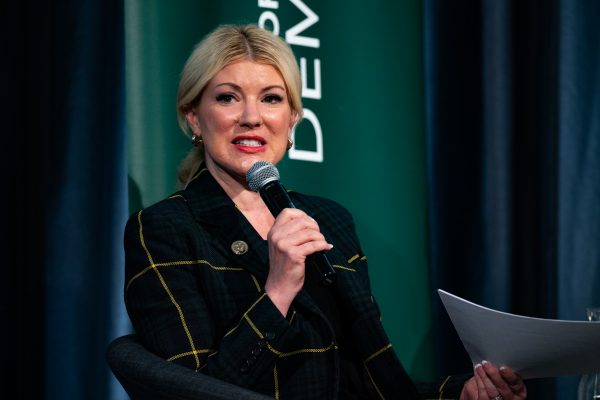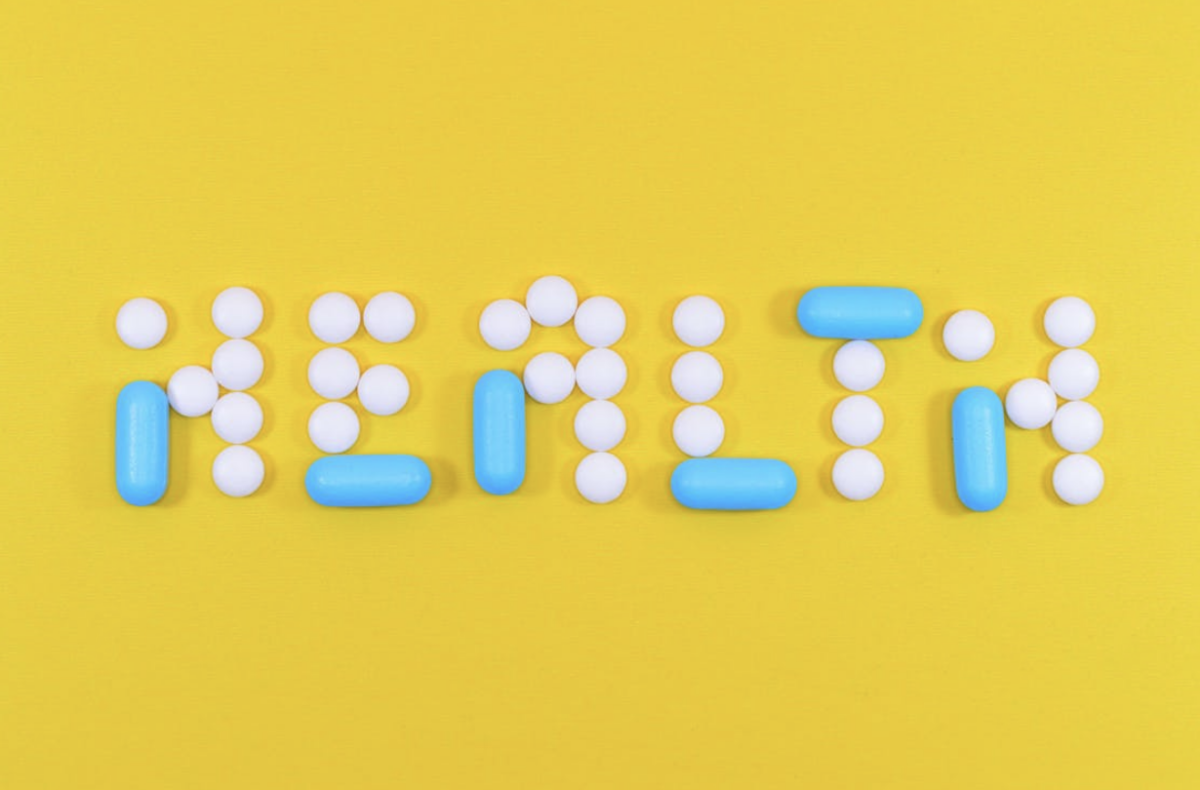Colorado decriminalized psychedelics — now what?
Prop 122’s total yes count tripped over 50% last Tuesday.
Collegian | Trin Bonner
Kyra McKinley and Gavin Wolf
November 17, 2022
As of Nov. 9, the vote was called on Colorado Proposition 122, decriminalizing certain psychedelic compounds and legalizing eventual therapeutic use. With just 53% of the vote, the ballot initiative will begin to be enacted.
Let’s break down what’s changing and why, starting with the changes to be implemented first.
Decriminalization of five natural psychedelic substances will happen before anything else. Psilocybin, psilocin, mescaline (but not peyote), ibogaine and dimethyltryptamine (DMT) will all be decriminalized statewide.
Decriminalization means that possession of a small amount of these substances for personal, religious or other usage, provided the owner is at least 21 years old, will not lead to civil or criminal charges and will not be high priority for law enforcement. Sale, however, is still prohibited, and persons under the age of 21 will be charged with a petty drug offense if caught in possession or use. Cultivation and distribution are more complicated.
Growth is allowed provided “the plants and fungi are kept in or on the grounds of a private home or residence” and “the plants and fungi are secured from access by persons under 21 years of age,” according to the proposition.
Intentional cultivation of associated fungi and plants outside a private residence in a task-specific facility for the purpose of consumption do not get the same protections. In Denver, where psilocybin was decriminalized in 2019, enforcing possession laws regarding psilocybin has become a lower priority for the Denver Police Department. It’s unclear if this will become a statewide guide.
Distribution is restricted to “giving away (the decriminalized psychedelics) for personal use without remuneration to a person or persons 21 years of age or older.” Essentially, giving away the decriminalized drugs is not illegal, but accepting any compensation for them is.
Psilocybin and psilocin are compounds in “magic mushrooms,” with psilocybin being the compound before consumption and psilocin the metabolized version. They’re essentially the same compound and are used interchangeably most of the time. Trips can last between four to six hours and sometimes longer depending on the mushroom strain.
Mescaline is a psychedelic compound found in certain types of cacti in southern Texas, Mexico and South America. Peyote, which is not decriminalized, is one of the cacti that produce mescaline in little button growths off the top. Mescaline and peyote are illegal under federal laws but are given an exception for certain Native American rituals. Trips typically last about 12 hours with a peak about two hours in.
Ibogaine is probably the strangest item on this list. It is considered a psychedelic, but its main use is as addiction treatment. There are some treatment centers in Canada, Mexico and other countries, but the evidence of the substance’s effectiveness is limited.
Finally, there’s dimethyltryptamine, or DMT. DMT is the strongest of the hallucinogens here but also the shortest trip, usually ending 30-45 minutes after smoking or injecting. Ayahuasca is a ceremonial use of DMT prepared as a drink, which increases its duration to approximately four hours.
All five of these things have one major thing in common: They’re naturally occurring in plants. This does not automatically give them a pass for safety. They’re serious drugs, hence the Schedule 1 classifications across the board. It does distinguish them, however, from other psychedelics, notably LSD, that are synthesized in labs.
All of these drugs are widely considered to be nonaddictive, which makes sense seeing how they’re being considered as potential addiction treatments and are difficult to overdose on depending on the consumption method.
Their biggest danger lies in mental conditions. A person with a history of psychosis should steer well clear of hallucinogenics, as they can potentially flare up symptoms. Drug interactions are not formally studied with illegal drugs, but the effects of antidepressants and other drugs influencing serotonin levels can be altered by the concurrent use of psychedelics.
It’s also important to remember that while these drugs will be decriminalized, they are illegal in Colorado currently and federally illegal and will not be able to be legally obtained beyond certain narrow provisions. Decriminalization and legalization are not the same thing.
That covers what’s being decriminalized. How about what’s being legalized?
Proposition 122 gives the Department of Regulatory Agencies until 2024 to establish a legal framework for licensing facilitators and other support staff needed to carry out psychedelic therapy. Notably, these directives only apply to psilocybin and psilocin.
Patients will need to be at least 21 years old and suffer from a rather small list of conditions to be eligible for therapy, including PTSD, cases involving terminal illnesses, depression (mostly for rare treatment-resistant kinds) and addiction.
In 2026, DORA can opt to expand the list of substances available for therapeutic use but is not allowed to until then.
How does this new law compare to medical cannabis or even recreational cannabis? The main difference is how patients will use the drug.
Medical cannabis is distributed through dispensaries that sell the product to customers who show them the appropriate license. It is more like a pharmacy where you get your drugs and take them home to use them.
Psychedelic healing centers are more similar to things like surgeries or therapy. You get screened, do all the preparation work and are then given the dosage under guidance from a therapist who’s there to ensure the trip doesn’t go awry. You will not be given psilocybin to take home under the current law, and there are no retail sales options for psilocybin.
Reach Grayson Acri at cannabis@collegian.com or on Twitter @Guy1376.



